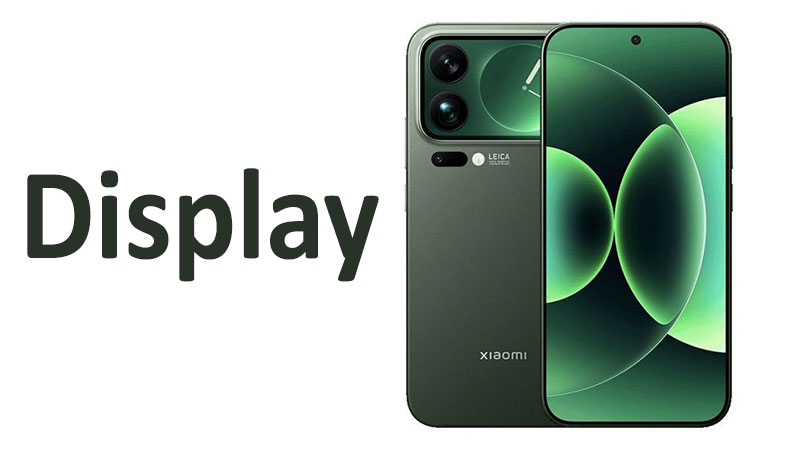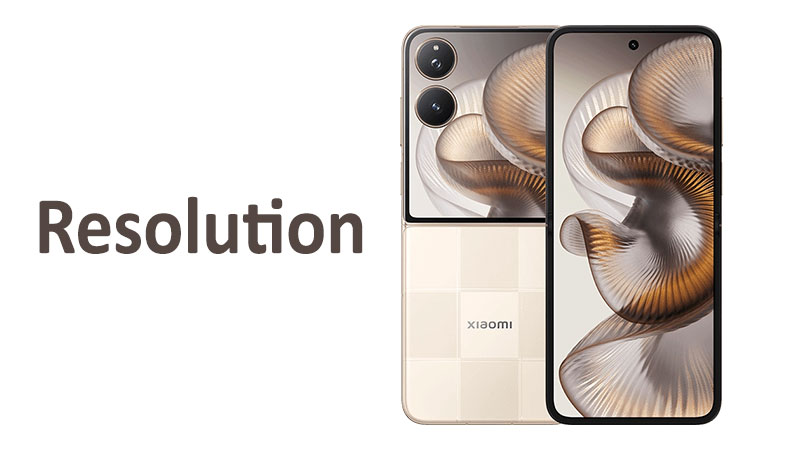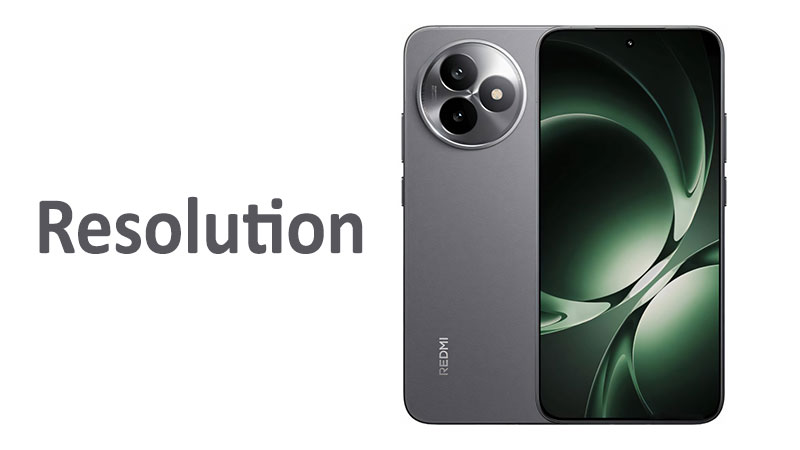The Xiaomi 17 Pro Max Display technology represents a huge leap forward. It combines industry-leading brightness with fluid motion control. Choosing a smartphone hinges heavily on its screen quality. This article provides a complete review of the 17 Pro Max screen. We examine its groundbreaking features and what they mean for the user. Understanding this display ensures you get the most from this flagship device.
Defining the Screen Experience: LTPO AMOLED
The primary display on the Xiaomi 17 Pro Max uses LTPO AMOLED technology. This is a crucial foundation for its elite performance. LTPO stands for Low-Temperature Polycrystalline Oxide. This technology is superior to traditional AMOLED panels. It delivers exceptional visuals while conserving battery life. LTPO is a must-have feature for any modern premium phone.
The Power of LTPO Technology
LTPO enables a variable refresh rate. The display can dynamically adjust its frequency. It drops as low as 1Hz for static images. This drastically reduces power draw when the screen is idle. When you scroll or game, the rate instantly ramps up. This adaptive capability is a key element of the phone’s efficiency. It ensures the phone maintains its battery life throughout the day.
Color Depth and Accuracy
This panel supports an astonishing 68 billion colors. This specification is often referred to as 12-bit color depth. It allows for incredibly smooth color gradients. You will see virtually no banding in high-quality photos or videos. Color accuracy is paramount for professional image viewing. The wide color gamut delivers true-to-life shades and vibrant hues. This is especially noticeable when viewing HDR content.
Screen Dimensions and Crispness
The main screen measures a generous 6.9 inches diagonally. This size offers an immersive experience for media consumption. The screen-to-body ratio is approximately 92.3%. This means the bezels surrounding the screen are exceptionally thin. The resolution is 1200 x 2608 pixels. This translates to a density of about 416 pixels per inch (ppi). Images and text appear remarkably crisp and detailed. This combination makes for an excellent viewing canvas.
The Brightness Revolution: Peak 3500 Nits
A defining feature of this display is its incredible peak brightness. The screen can reach an astounding 3500 nits. This figure sets a new standard for mobile display technology. High brightness is vital for two main scenarios. It ensures excellent visibility outdoors and enhances HDR playback.
Unmatched Outdoor Visibility
Direct sunlight often washes out lesser smartphone displays. The 3500 nit peak brightness overcomes this issue easily. The screen remains legible even under bright, direct sun exposure. This extreme brightness is typically reserved for small areas of the screen. However, even the sustained high brightness is impressive. Reading messages or navigating maps outdoors becomes effortless. This feature enhances the device’s practical usability every day.
Impact on High Dynamic Range (HDR)
High brightness is the core requirement for true HDR performance. When displaying HDR content, the 3500 nits allow for dazzling highlights. Sunsets, reflections, and explosions look dramatically more realistic. This brightness difference creates a profound sense of depth. It results in a far more cinematic viewing experience. The extreme dynamic range truly shines on this device.
Specialized Comparison: Brightness
The 3500 nits specification pushes the boundary past competitors. Many rival flagships peak in the range of 2500 to 3000 nits. Xiaomi has clearly focused on achieving market-leading luminosity. This makes the 17 Pro Max a strong choice for outdoor use. It also positions it as a leader in mobile video playback quality. This brightness level is a significant selling point for the device.
Motion and Fluidity: The 120Hz Refresh Rate
The smooth motion of the screen is delivered by the 120Hz refresh rate. This means the display updates 120 times every second. This refresh speed is double the standard 60Hz rate. The difference is immediately apparent during use. Everything looks smoother and more responsive.
Benefits in Everyday Use
Simple actions like scrolling through social media feel buttery smooth. System animations appear fluid and instantaneous. Even basic navigation is significantly more pleasant at 120Hz. The high refresh rate reduces motion blur effectively. This contributes to less eye fatigue over long periods of reading. The faster screen is a vital part of the premium user experience.
The 120Hz LTPO Synergy
The 120Hz rate works hand-in-hand with the LTPO panel. The phone only uses the full 120Hz speed when necessary. When viewing a static web page, the rate drops dramatically. This preserves battery life efficiently. The display seamlessly jumps back up to 120Hz the moment the user interacts. This intelligent management provides fluidity without excessive power consumption.
Gaming Performance Boost
Gamers see the greatest benefit from the high refresh rate. Compatible games run at up to 120 frames per second (FPS). This provides smoother visuals and faster reaction times. The display keeps up with the phone’s powerful processor. It eliminates screen tearing and input lag for competitive players. The combination of high refresh rate and powerful chip is essential for mobile gaming.
Eye Comfort: 2160Hz PWM Dimming
Xiaomi has paid close attention to user health and eye comfort. The display utilizes a high-frequency 2160Hz PWM dimming technology. PWM stands for Pulse Width Modulation. This system controls the screen brightness at low levels. It rapidly turns the screen on and off many times per second.
Understanding Display Flicker
Lower frequency PWM can cause noticeable screen flicker. This flicker often leads to eye strain and headaches for sensitive users. Many older displays operate at much lower PWM frequencies. This is a common issue for users with sensitive eyes. The 2160Hz rate is exceptionally high.
Flicker Reduction for Sensitive Eyes
The 2160Hz frequency is far beyond what the human eye can perceive. The rapid pulsing effectively eliminates visible flicker. This makes the screen much more comfortable to use in dim environments. When you lower the brightness, the display remains stable. This focus on flicker reduction is a major selling point for health-conscious buyers. It demonstrates a commitment to user comfort.
Important Buyer Points for Eye Health
If you have experienced eye strain with past AMOLED phones, this feature is critical. The high PWM frequency minimizes the risk of discomfort. Users who read or use their phone late at night will appreciate this technology. It ensures a high-quality visual experience without the typical drawbacks of older AMOLED dimming. Always test the phone in low light to confirm comfort.
Cinematic Standards: Dolby Vision and HDR
The Xiaomi 17 Pro Max display is fully certified for elite cinematic standards. It supports multiple High Dynamic Range formats. These certifications ensure superior media playback quality. It confirms the display can handle professional content standards.
Comprehensive HDR Support
The phone supports Dolby Vision, HDR Vivid, and HDR10+. Dolby Vision is a premium, proprietary HDR format. It provides per-frame metadata for maximum visual impact. HDR10+ is a similar open-standard format. HDR Vivid is a newer standard, particularly prominent in China. This comprehensive support guarantees optimal quality for almost any streamed content. You will experience films and shows exactly as the creators intended.
The Cinematic Viewing Experience
The combined effect of high brightness and multiple HDR standards is stunning. Colors pop, shadows retain detail, and highlights are intense. This creates a deeply immersive and realistic image. The 6.9-inch size enhances the cinematic feel. Streaming services will automatically deliver the highest quality signal. The user needs no special settings to enjoy premium content.
Specialized Comparison: HDR
Offering both Dolby Vision and HDR10+ is an industry best practice. Some competitors only support one of the two main standards. The inclusion of HDR Vivid future-proofs the device for emerging content. This wide compatibility ensures the user never misses out on peak visual quality. It is a testament to the display’s versatility.
Protection and Durability: Dragon Crystal Glass 3
A flagship display requires equally strong protection. Xiaomi has equipped the 17 Pro Max with its proprietary glass. This protection layer is called Xiaomi Dragon Crystal Glass 3. It provides robust defense against daily wear and tear.
Enhanced Scratch and Drop Resistance
Dragon Crystal Glass 3 offers superior hardness and resistance. It is designed to withstand impacts from drops. It also protects against micro-scratches from keys or coins. The exact formulation is proprietary. However, it competes directly with leading protection solutions globally. This durability is vital for preserving the display’s pristine quality. It helps maintain the phone’s resale value over time.
Buyer Notes on Screen Protection
While the glass is extremely tough, no screen is indestructible. Buyers should still consider a quality screen protector. This adds an extra layer of defense against deep scratches. Using a protective case is also recommended. Dragon Crystal Glass 3 provides a great foundation of durability. Prudent users will always take additional steps to protect their investment.
The Revolutionary Secondary Display
The Xiaomi 17 Pro Max features a groundbreaking secondary display on the rear. This smaller screen is designed for added convenience. It allows users to access information without turning over the device. It is a unique feature that sets this phone apart.
Secondary Display Specifications
This smaller screen shares the same high-end technology as the main panel. It is also an LTPO AMOLED display. It supports the same 120Hz refresh rate for fluid interaction. Astonishingly, it also achieves the same 3500 nit peak brightness. This ensures excellent visibility even when viewing the rear screen outdoors. The secondary screen measures 2.9 inches. It features a resolution of 596 x 976 pixels.
Functionality and Use Cases
The rear display offers multiple smart functions. Users can view notifications and check the time quickly. It allows for quick control of music playback. Most importantly, it enables high-quality selfies. Users can utilize the phone’s main, superior cameras for self-portraits. The rear screen acts as a high-resolution viewfinder. This functionality greatly enhances the camera experience.
Specialized Comparison: Dual Displays
Most competitor phones lack this secondary display feature. Those that do include it often use lower-resolution, lower-refresh-rate panels. The Xiaomi 17 Pro Max uses flagship-grade technology for both screens. The 120Hz LTPO and 3500 nits on the rear screen are industry-leading. This commitment to dual-screen quality is a key competitive differentiator.
Comprehensive Pros and Cons
Reviewing the entire display package requires a balanced view. The system offers many advantages. However, buyers should be aware of minor trade-offs.
Display System Advantages (Pros)
The 3500 nits peak brightness ensures perfect outdoor use. The 120Hz LTPO refresh rate provides incredible fluidity and efficiency. High-frequency 2160Hz PWM reduces eye strain significantly. The inclusion of the 12-bit, 68 billion color depth is excellent for professionals. Comprehensive HDR support guarantees cinematic video playback. The unique secondary display adds immense practical utility.
Potential Drawbacks (Cons)
A 6.9-inch screen size is very large for some users. This may impact one-handed comfort. The secondary display, while useful, adds to the manufacturing complexity. Replacing the Dragon Crystal Glass 3 may incur a high cost. Users must decide if the dual-screen form factor suits their daily habits. These are minor considerations for a truly high-end product.
Buyer’s Checklist for Display Selection
Understanding the technical specs helps in making a final decision. Consider these key questions before purchasing the device.
Do you prioritize outdoor viewing?
If you frequently use your phone outside, the 3500 nits is a major advantage. It will ensure clear visibility in all lighting conditions. This superior brightness makes the phone a winner for outdoor enthusiasts.
Are you sensitive to screen flicker?
The 2160Hz PWM dimming is a strong reason to choose this phone. If older AMOLED screens caused you eye discomfort, this feature is essential. It delivers a comfortable viewing experience at low brightness settings.
Do you value fluid motion and gaming?
The 120Hz refresh rate makes a massive difference in interaction speed. For mobile gamers, this fast response rate is non-negotiable. It provides a distinct visual edge in competitive play.
Will you use the secondary display?
Evaluate how often you would benefit from the rear screen. If you take a lot of high-quality selfies or need glanceable notifications, it is invaluable. If you never use your phone face down, its utility may be limited.
Conclusion: Making an Informed Display Choice
The Xiaomi 17 Pro Max display is an engineering masterpiece. It sets new benchmarks in brightness, efficiency, and eye comfort. The LTPO AMOLED panel expertly balances speed and power use. Key features like 3500 nits and 2160Hz PWM address common user pain points. Choosing this device means investing in a world-class visual experience. The display system truly elevates the flagship mobile category.
Frequently Asked Questions (FAQ)
1. What does the 2160Hz PWM feature actually do?
The 2160Hz PWM controls brightness at a very high frequency. This eliminates screen flicker that can cause eye strain in sensitive users.
2. Is the 3500 nits brightness available all the time?
No, 3500 nits is the maximum peak brightness. The screen achieves this in small areas when displaying HDR content or in extreme sunlight.
3. Does the 120Hz refresh rate drain the battery quickly?
The 120Hz rate uses LTPO technology. It is adaptive and lowers the rate when not needed. This greatly reduces battery drain compared to a fixed 120Hz screen.
4. What is the benefit of 68 billion colors (12-bit)?
The 12-bit color depth prevents color banding. It ensures extremely smooth, realistic transitions between different shades and hues.
5. What unique features does the secondary display offer?
The secondary display has 120Hz and 3500 nits specs. Its main unique benefit is enabling high-quality selfies using the phone’s primary camera system.



